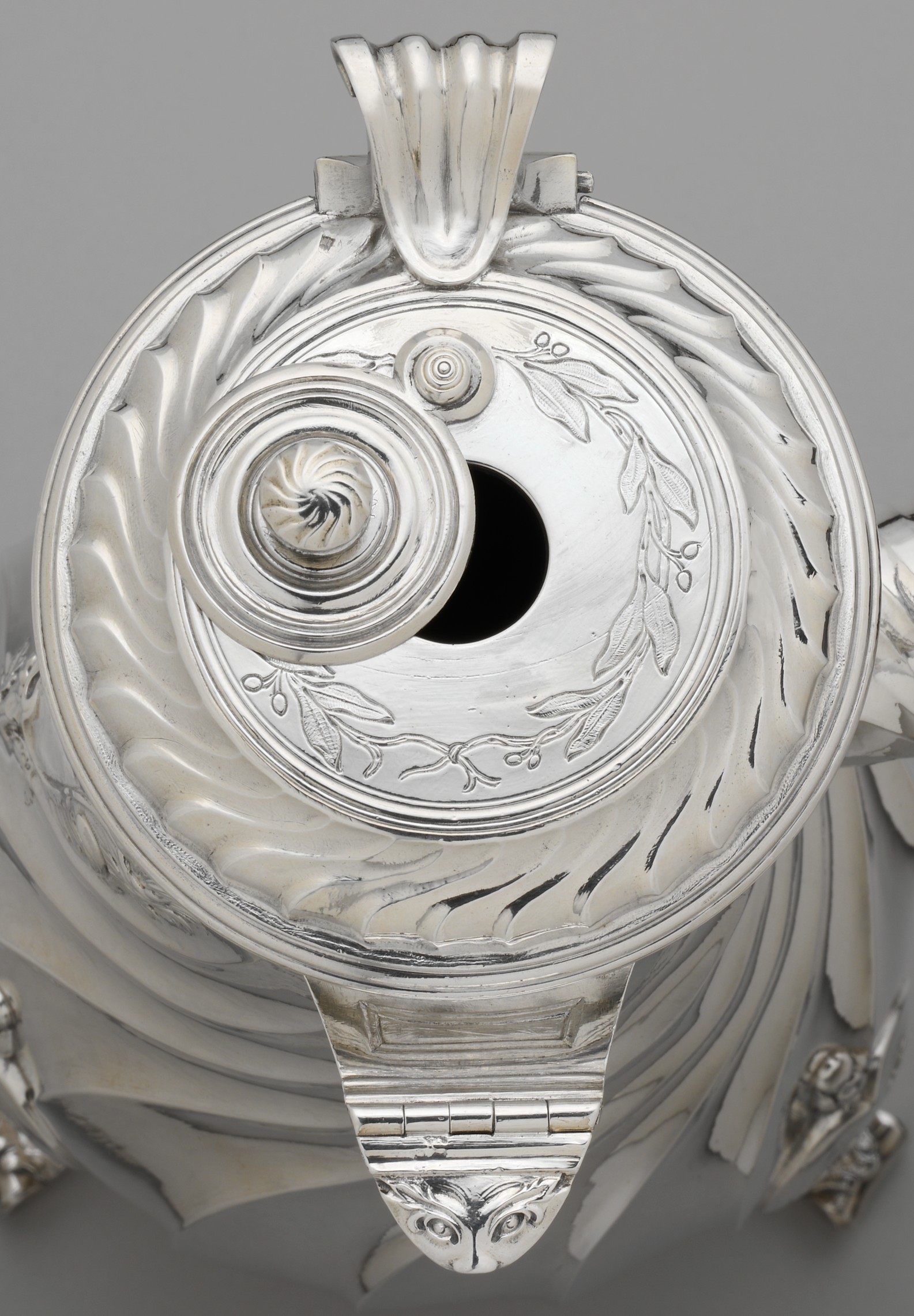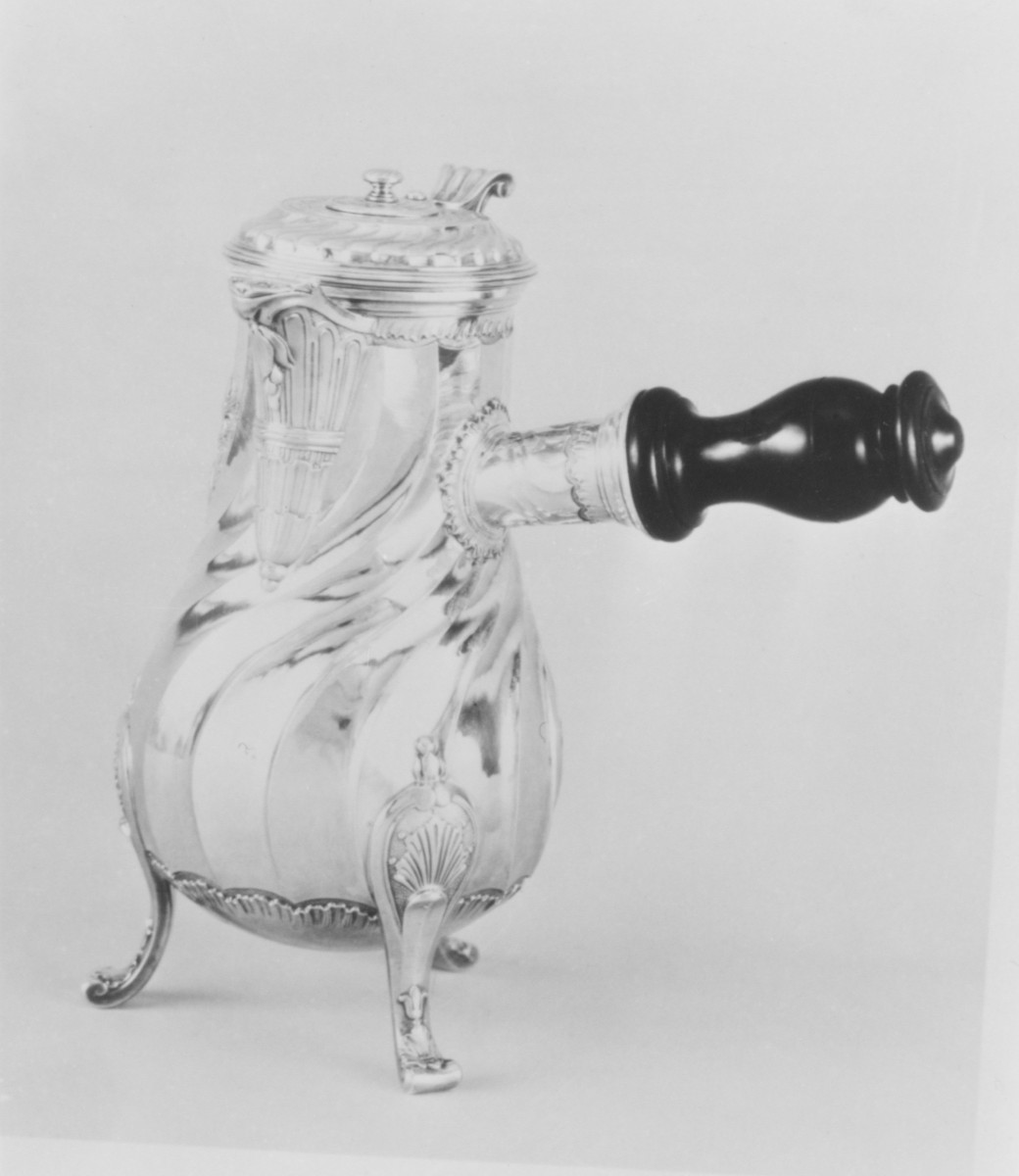Chocolate pot
François Thomas Germain French
Chocolate was introduced into France in the late seventeenth century, and it quickly became popular as a morning beverage in particular. A number of French prints from this period illustrate fashionable couples drinking chocolate, indicating that this new hot drink had gained immediate acceptance. Hot chocolate needed to be stirred in order to prevent the chocolate from settling at the bottom of the pot. Thus, most French chocolate pots were equipped with a hole in the lid, concealed by a small cover that swiveled, through which a long stick, known as a moussoir, could be inserted for stirring.
This chocolate pot was produced approximately ten years after a similar coffeepot (33.165.1) by the same silversmith, François Thomas German (1726–1791). It has the same basic shape as the earlier coffeepot but is decorated in the emerging Neoclassical style. Despite the swirling channels on the body, the chocolate pot lacks the sense of movement that is so pronounced in the coffeepot, and the symmetrical arrangement of the motifs on the legs and spout reflects the restraining influence of Neoclassicism. Many of the decorative objects produced in France in the 1760s, such as this chocolate pot, are in the so-called Transitional style, in which Rococo stylistic features are combined with newly fashionable Neoclassical motifs.
Due to rights restrictions, this image cannot be enlarged, viewed at full screen, or downloaded.
This artwork is meant to be viewed from right to left. Scroll left to view more.




![marks [2], [4] Chocolate pot, François Thomas Germain (French, Paris 1726–1791 Paris, master 1748), Silver; ebony, French, Paris](https://images.metmuseum.org/CRDImages/es/original/164152.jpg)
![mark [3] Chocolate pot, François Thomas Germain (French, Paris 1726–1791 Paris, master 1748), Silver; ebony, French, Paris](https://images.metmuseum.org/CRDImages/es/original/164153.jpg)
![marks [2], [4] Chocolate pot, François Thomas Germain (French, Paris 1726–1791 Paris, master 1748), Silver; ebony, French, Paris](https://images.metmuseum.org/CRDImages/es/original/146660.jpg)
![mark [1] Chocolate pot, François Thomas Germain (French, Paris 1726–1791 Paris, master 1748), Silver; ebony, French, Paris](https://images.metmuseum.org/CRDImages/es/original/146661.jpg)
![mark [3] Chocolate pot, François Thomas Germain (French, Paris 1726–1791 Paris, master 1748), Silver; ebony, French, Paris](https://images.metmuseum.org/CRDImages/es/original/146662.jpg)
